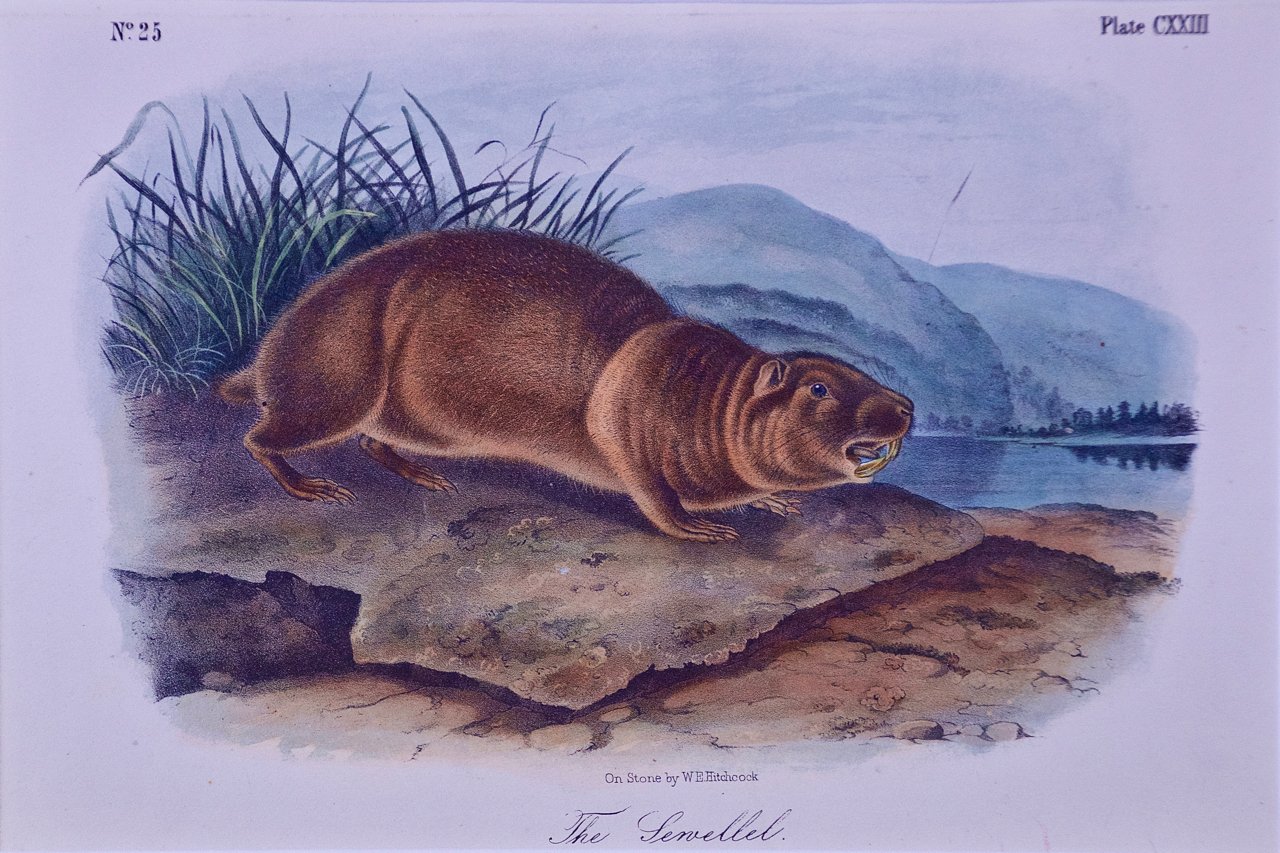18th Century Hand Colored Engraving of a Camel from Pennant's " British Zoology"
An 18th Century Hand Colored Engraving of a Camel from Thomas Pennant's famous publication on natural history "The British Zoology, Published under the Inspection of the Cymmrodorion Society", published in London in 1750. Charles Darwin referred to this work in his research. This print was one of only eleven depicting quadrupeds in the book, as a majority of the illustrations focused on birds.
Creator: Desmoulins
Creation Year: 1766
Dimensions: Height: 20.5 in (52.07 cm) Width: 16.5 in (41.91 cm) Depth: 0.88 in (2.24 cm)
Medium: Engraving
Condition: See description below.
An 18th Century Hand Colored Engraving of a Camel from Thomas Pennant's famous publication on natural history "The British Zoology, Published under the Inspection of the Cymmrodorion Society", published in London in 1750. Charles Darwin referred to this work in his research. This print was one of only eleven depicting quadrupeds in the book, as a majority of the illustrations focused on birds.
Creator: Desmoulins
Creation Year: 1766
Dimensions: Height: 20.5 in (52.07 cm) Width: 16.5 in (41.91 cm) Depth: 0.88 in (2.24 cm)
Medium: Engraving
Condition: See description below.
An 18th Century Hand Colored Engraving of a Camel from Thomas Pennant's famous publication on natural history "The British Zoology, Published under the Inspection of the Cymmrodorion Society", published in London in 1750. Charles Darwin referred to this work in his research. This print was one of only eleven depicting quadrupeds in the book, as a majority of the illustrations focused on birds.
Creator: Desmoulins
Creation Year: 1766
Dimensions: Height: 20.5 in (52.07 cm) Width: 16.5 in (41.91 cm) Depth: 0.88 in (2.24 cm)
Medium: Engraving
Condition: See description below.
Thomas Pennant (1726-1798) was a distinguished Welsh naturalist and travel writer. His publications demonstrated his wide range of intellectual curiosity, keen sense of observation, and an attention to detail. His books were illustrated by high-quality and attractive engravings, which assured his books a broad popularity among academics as well as the general public. Like many affluent young Britons of his day, he attended Oxford University, although he did not receive a degree. As a zoologist, he participated in the Transactions of the British Royal Society, corresponding with leading scientists of his day such as Linnaeus. His natural history books such as The British Zoology (1766), History of Quadrupeds (1781) and Arctic Zoology (1784-85), exemplify the Enlightenment impulse to comprehensively categorize the natural world and contributed to the popularization of the study of zoology. His informative travel books about Britain and Europe, such as A Tour in Wales (1778-83), chronicled local customs, natural history and antiquities. Pennant also published an autobiography, The Literary Life (1793).
The engraving was created by Peter Mazell after a drawing by the French artist, A. F. Desmoulins. Mazell was was an Irish painter and engraver based in London. He exhibited at the Society of Artists between 1761 and 1791, and at the Royal Academy in 1797. Mazell engraved the plates for many books, including scientific publications such as Thomas Pennant's natural history volumes The British Zoology (1766) and Arctic Zoology (1785). He also produced plates for John Boydell and engraved the illustrations for Cordiners' Remarkable Ruins and Romantic Prospects in North Britain (1792).
This hand colored engraving is presented in a beautiful burl wood frame & double mat. It is in excellent condition.



























